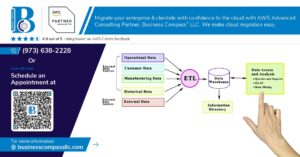You’ve spent months building your data infrastructure on traditional warehouses, and now people are saying Snowflake changes everything. Are they right, or just hyping the latest shiny object?
Here’s the truth: choosing between Snowflake and traditional data warehouses isn’t just a technical decision—it’s a business strategy that impacts your entire organization’s ability to leverage data.
Modern cloud data warehousing with Snowflake represents a fundamental shift in how companies store, access, and analyze their most valuable asset: data. The differences go far beyond simple feature comparisons.
But before you make any decisions that could cost millions in infrastructure investment, you need to understand exactly what separates these approaches beneath the marketing buzzwords and technical jargon. The answer might surprise even your most experienced data engineers.
Understanding Traditional Data Warehouses
Core architecture and components
Traditional data warehouses are built like fortresses – rigid, structured, and monolithic. They typically consist of three layers: a data staging area, an integration layer, and presentation servers. Everything’s connected through ETL processes that move data in batches, usually during overnight windows when systems aren’t busy. Not exactly speedy by today’s standards.
Historical evolution of data warehousing
Data warehousing has come a long way since Bill Inmon coined the term in the 1970s. First-gen systems were custom-built monsters requiring massive hardware investments. The 90s brought vendor solutions like Teradata and Oracle, while the 2000s introduced appliance models. Each evolution solved problems but created new ones – the eternal tech cycle.
Common implementation challenges
Ever tried building a traditional data warehouse? It’s a nightmare. Projects regularly blow past deadlines and budgets, sometimes taking years to complete. The biggest headaches? Schema design complexity, ETL pipeline fragility, and the constant battle with data quality. And once you’re finally live, performance issues show up like uninvited guests.
Cost structure and licensing models
Traditional warehouses will drain your IT budget faster than you can say “capital expenditure.” The pricing model is a perfect storm of pain: massive upfront hardware costs, expensive perpetual software licenses, annual maintenance fees (typically 20-25% of license costs), plus the small army of specialists needed to keep everything running.
Snowflake’s Modern Data Warehouse Approach
Cloud-native architecture explained
Snowflake isn’t just another database with cloud hosting slapped on. It’s built from scratch for the cloud. No hardware to buy, no capacity planning nightmares, no data centers to manage. You simply log in and start working with your data. That’s the beauty of true cloud-native design.
Separation of storage and compute
Think of traditional warehouses as all-in-one machines. When one part gets overwhelmed, everything slows down. Snowflake split these components apart. Store massive amounts of data without worrying about query speed. Need more processing power? Just scale up compute without touching your storage. Game-changer.
Multi-cluster shared data architecture
Snowflake’s multi-cluster approach is like having multiple teams working on the same project simultaneously without stepping on each other’s toes. Different departments can run complex analytics on the same data at the same time. No more waiting in line for your turn to access critical business information.
Automatic scaling capabilities
Remember the old days of predicting exactly how much computing power you’d need? Snowflake makes that headache disappear. It automatically scales up when demand spikes and scales down when things quiet down. Your warehouse adjusts in seconds, not days or weeks.
Pay-as-you-go pricing model
The old world: massive upfront costs and paying for capacity you might use someday. Snowflake flips the script. You pay only for what you actually use – storage separate from compute. Quiet weekend? Your bill goes down. Busy quarter-end? Resources scale up, and you only pay for what you needed.
Key Performance Differences
A. Query processing speed comparison
Snowflake smokes traditional warehouses in query speeds. While legacy systems choke on complex queries, Snowflake’s cloud-native architecture separates storage from compute, letting it blaze through massive datasets in seconds instead of minutes.
B. Scalability under varying workloads
Traditional warehouses make you guess your capacity needs upfront. Snowflake? Just dial resources up or down instantly. Monday morning report crunch? Scale up. Quiet weekend? Scale down. No hardware headaches, no capacity planning nightmares.
C. Handling of concurrent users
Traditional warehouses become total slowpokes when too many people show up to the party. Snowflake’s multi-cluster architecture lets hundreds of users run complex queries simultaneously without breaking a sweat. Everyone gets their own compute resources.
D. Processing of semi-structured data
JSON, XML, and Parquet files make traditional warehouses throw tantrums. Snowflake natively handles semi-structured data without conversion gymnastics. Just load it and query it with standard SQL—no special tools or formats required.
Data Management Capabilities
Data loading and ETL processes
Snowflake crushes traditional warehouses when it comes to data loading. You can dump virtually any data format in there and Snowflake handles it without breaking a sweat. No more complicated ETL pipelines or pre-processing headaches. Just load and go.
Data sharing functionalities
Ever tried sharing data between departments in a traditional warehouse? Nightmare city. Snowflake lets you share live data instantly with zero copying. The person you’re sharing with gets the most current version without you lifting a finger.
Security features and compliance
Traditional warehouses make you choose between accessibility and security. Snowflake doesn’t. Their end-to-end encryption, automatic data masking, and row-level security blow legacy systems out of the water. Plus, they’re compliant with everything from HIPAA to GDPR right out of the box.
Cost Comparison and ROI
Infrastructure investment differences
Comparing Snowflake to traditional warehouses is like comparing renting vs. buying a house. Traditional systems demand hefty upfront server purchases, data center costs, and IT staff. Snowflake eliminates these capital expenses entirely with its pay-as-you-go model. No hardware to buy, no infrastructure to maintain.
Operational cost analysis
Traditional warehouses bleed money through ongoing maintenance, upgrades, power, cooling, and specialized personnel. Snowflake shifts the entire burden to the provider. Your team stops worrying about patches and updates and starts focusing on extracting value from data instead.
Total cost of ownership
The TCO gap is staggering. Traditional warehouses typically cost 2-3x more over three years when accounting for all expenses. Hidden costs like downtime, performance tuning, and capacity planning disappear with Snowflake’s consumption-based pricing and automatic optimization.
Resource optimization opportunities
Snowflake’s secret weapon? Instant scaling and automatic suspension of idle resources. Traditional warehouses run 24/7 regardless of usage. Snowflake’s micro-partitioning and data clustering also reduce query costs, while traditional systems require manual tuning that few organizations fully optimize.
Migration Considerations
Assessment of existing warehouse environment
Planning your migration strategy
Moving to Snowflake isn’t just a tech upgrade—it’s a business transformation. Start by mapping your current data flows, identifying integration points, and measuring performance baselines. Without these essentials, you’re basically jumping off a cliff without knowing how deep the water is.
Common migration challenges
Success stories and case studies
Embracing the Cloud-Native Advantage
Traditional data warehouses have served businesses well for decades, but Snowflake’s modern, cloud-native approach offers distinct advantages in performance, scalability, and data management. With separated storage and compute layers, Snowflake delivers superior concurrency handling, automatic scaling, and seamless semi-structured data processing without the overhead of complex maintenance or rigid infrastructures.
Organizations considering a migration should evaluate their specific data needs, existing infrastructure investments, and long-term analytical goals. While Snowflake’s consumption-based pricing model often delivers better ROI through reduced administrative costs and improved business agility, the right choice depends on your unique data strategy. Whether you’re seeking better performance, simplified management, or greater analytical flexibility, the evolution from traditional warehousing to Snowflake’s innovative architecture represents a significant step forward in how enterprises can transform data into business value.




















